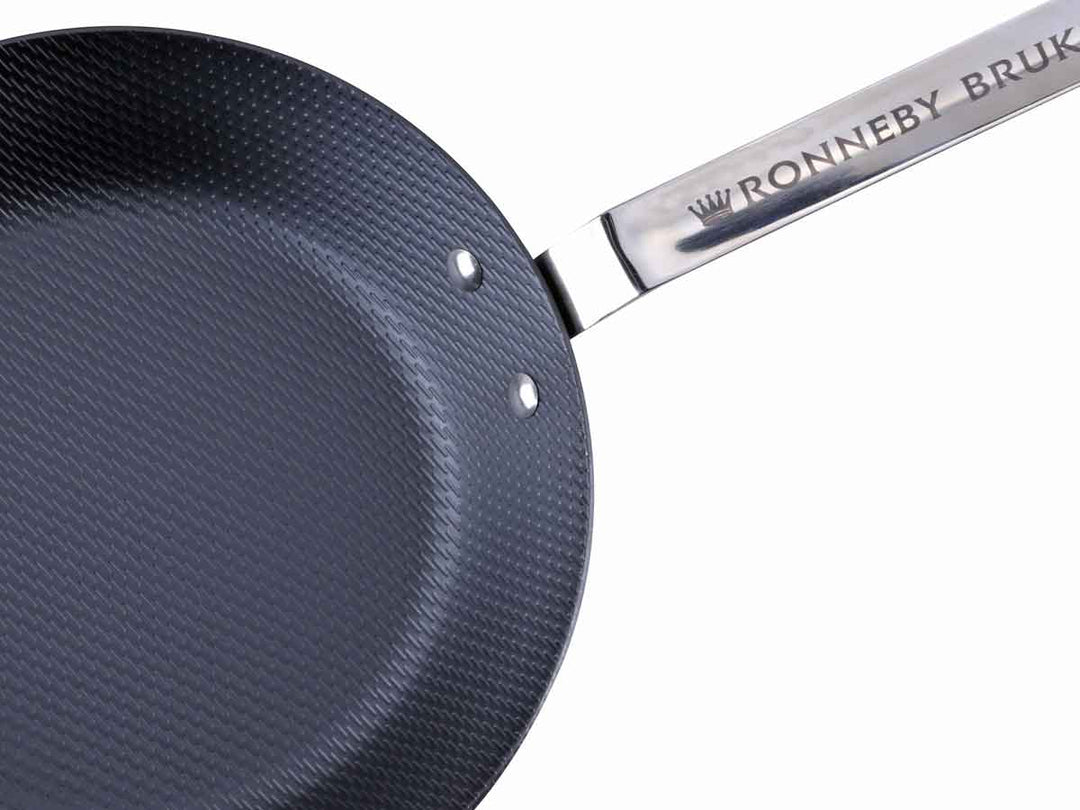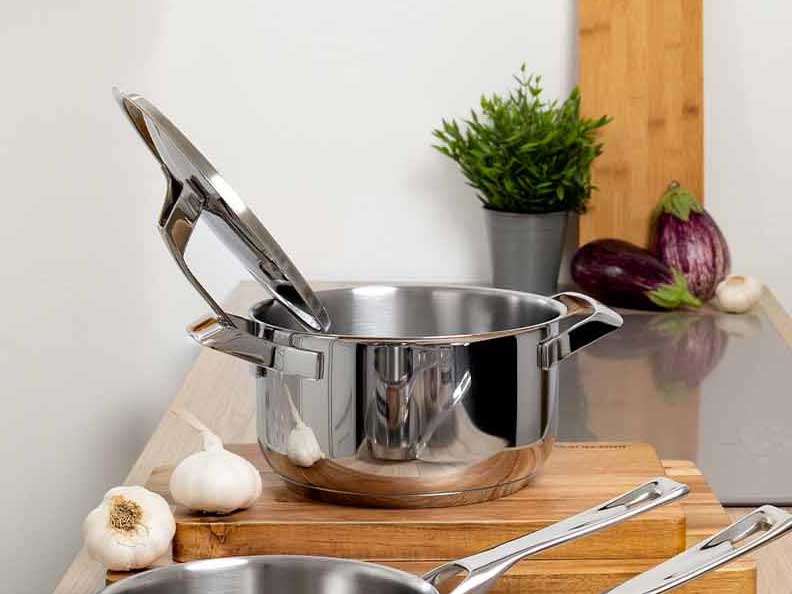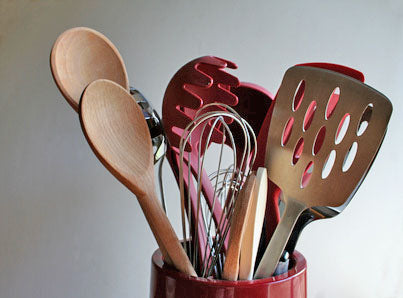enamel
Enamel is like a coating of glass. This comparison reveals many of the properties of this very old method of sealing cookware.
Enamel is mainly used to seal cookware made of steel (then called steel-enamel or steel-ceramic) or cast iron. You can find answers to frequently asked questions about enamel here.
Is enamel a nonstick coating?
No! Like glass, enamel has a non-porous, hygienic surface, but, like glass, it has no significant non-stick effect. If necessary, choose cookware with a non-stick coating for foods that tend to stick.
Is enamel safe?
In principle, every coating on the market has been tested numerous times and is therefore harmless, including enamel, of course. But this is all the more true for enamel, since it is vitreous in nature and only melts at such high temperatures that no household stove will ever reach it. Potentially harmful outgassing in the event of extreme overheating of the cookware is thus ruled out. In addition, most enamels are also nickel-free, so that enamel cookware is a good alternative to stainless steel cookware for people who are extremely allergic to nickel. (Of course only such enamel cookware without stainless steel fittings).
Is enamel oven-proof?
Enamel is melted into the metal surface at around 800-900°C. The usual maximum of 250° C is therefore not a problem for enamel itself. However, please always observe the manufacturer's binding information on the use of the stove, because handles and fittings could limit or completely exclude the use of the stove.
Is enamel suitable for induction?
Enamel is just a seal, the basic material of the cookware is decisive for the induction suitability. In the case of enamel, this is usually steel or cast iron, and both are suitable for induction. But be careful: Always first heat up the cookware on the induction hob at a low power level before gradually switching to a higher power level. Heating up too quickly can cause the enamel to burst because the steel or cast iron underneath expands too quickly due to direct inductive heating, while the enamel layer is not heated inductively but much more slowly through thermal conduction and therefore also expands more slowly! The booster/power level of the induction hob may only be used when heating larger quantities of water, otherwise there is a risk of the enamel bursting!
How do you clean enamel?
Enamel is very easy to care for due to its glass-like nature. Hot water, some washing-up liquid and a soft cloth are usually sufficient. Stubborn dirt can be tackled with a dish brush. If something is very badly burned, it is best to first soak the burnt part in hot water and a little washing-up liquid before attempting to clean it.
Then use a mild, sand-free scouring agent (Viss or similar) to give the enamel its perfect, spotless shine. Simply apply a little to the surface and buff in circular motions with a soft cloth. Then rinse with clear water and dry thoroughly.
Never use steel wool or coarse abrasives containing sand.
If the cookware does not have a stainless steel rim, put a few drops of oil on a lint-free cloth and rub the rim with it to protect it from rusting.
Is enamel dishwasher-safe?
That depends on the manufacturer's specifications. In and of itself, enamel can withstand the dishwasher. However, remembering the introductory analogy to glass, enamel like glass can also become a victim of what is known as glass corrosion in the dishwasher. In this respect, it is advisable, if the cookware is marked as dishwasher-safe, to select a gentle program (glass program, if available). Attention: The upper edges of enamelled cookware usually have traces of wear from the kiln frame from the enamelling process, which is why there is no continuous protection of the steel or cast iron on the edge. Therefore, remove the cookware immediately after rinsing and dry it thoroughly with an absorbent cloth. If the cookware does not have a stainless steel rim, put a few drops of oil on a lint-free cloth and rub the rim with it to protect it from rusting.
The enamel has a chip / crack. Can I continue to use the cookware?
In principle yes, if the damaged area is on the outside of the cookware. On the inside of the cookware, depending on the depth, the damaged area could expand as a result of contact with food and liquids; therefore, the cookware should be replaced in this case.






